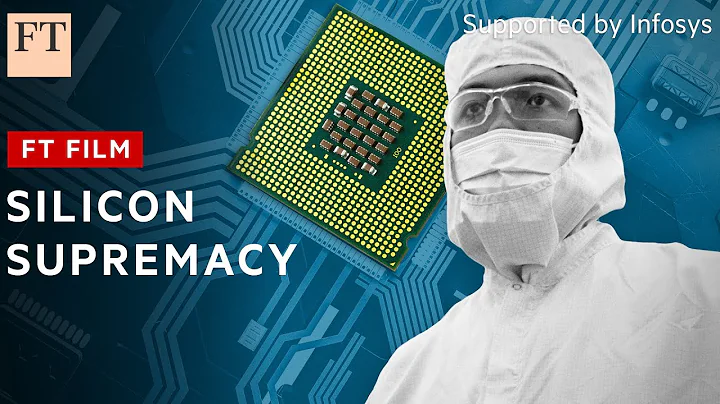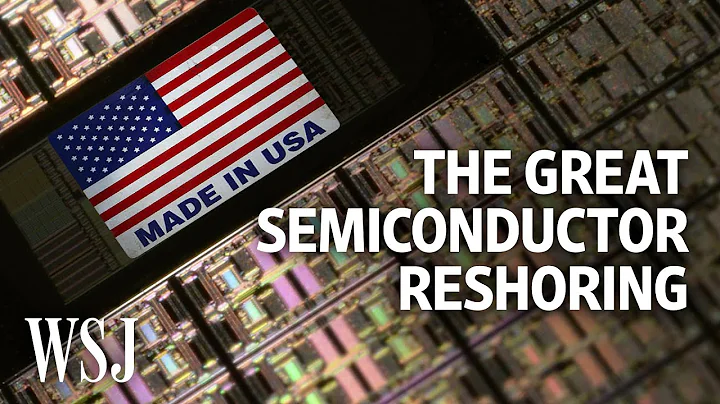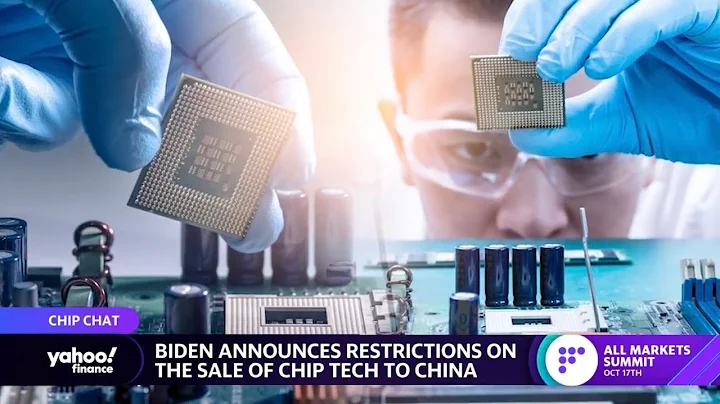
On May 31, workers were making 5G product semiconductors in the digital workshop of a technology company in Quannan County, Ganzhou City, Jiangxi Province. Picture/IC photo
The United States is once again "drawing small groups" to surround China, and is once again targeting the semiconductor industry.
On May 23, 2022, US President Biden announced the launch of the "Indo-Pacific Economic Framework " (IPEF) in Tokyo, Japan, with 13 countries including Japan, South Korea, and Australia joining. The White House issued a statement stating that this framework will revitalize the leadership of the United States in the "Indo-Pacific region" and provide countries in the region with "choices different from China" on important issues. According to its official statement, the "Indo-Pacific Economic Framework" will focus on negotiations on the four "pillars" of trade, supply chain, environmental protection and infrastructure, taxation and anti-corruption. Among them, ensuring access to semiconductors and related technologies is the top priority of the "pillar" of the supply chain.
This is not the first time in recent years that the United States has tried to squeeze China's strategic space in the semiconductor industry.
The United States' targeting, containment and suppression of China's industrial chain, especially the semiconductor industry, have been concentrated since the Trump period. At that time, the main approach was to use its " long-arm jurisdiction over " ability. In the name of "national information security" and "national economic interests", and with the targeted attack mode of increasing the embargo "entity list" as the main form, the embargo on semiconductor products is implemented against Huawei and more than 100 Huawei-affiliated companies. Classic example.
Since Biden took office in 2021, this "entity list" model has continued unabated. It is reported that the U.S. Department of Commerce is currently drafting a new round of chip bans, and wants to expand the scope of the attack to Chinese companies such as Hua Hong Semiconductor, Changxin Storage and Yangtze Memory , as well as Hynix (South Korea), UK Overseas companies such as Feiling (Germany) and Texas Instruments (USA) have set up factories in China. The Information website revealed that the drafting process may be completed in the next few months.
Not only that, the United States’ tactics to pursue and block China in the semiconductor industry have been “upgraded” in all aspects, and it has used the “three axes” against China: establishing industrial alliances to lobby, promoting legislation, and diplomacy to “gather people.”
From lobbying group to industry alliance
On May 11, 2021, 64 companies from the United States, Europe, Japan, South Korea and other countries and regions announced the establishment of the American Semiconductor Alliance (SIAC). These companies include Microsoft , Google , Apple , Intel , American AMD, Samsung , Nikon , etc., basically covering the entire semiconductor industry chain. The organization aims to "advance federal policies that promote U.S. semiconductor manufacturing and research," according to its press release.
As a lobbying organization, after the establishment of the American Semiconductor Alliance, it has repeatedly called on the U.S. government to allocate US$50 billion for domestic chip manufacturing incentives and research, support the implementation of the U.S. Chip Act (CHIPS Act), and promote the bipartisanship and bicameral process. Efforts are made to agree on amounts and areas for funding.
In a letter to congressional leaders, the organization said that the U.S. market share of global semiconductor manufacturing capacity has dropped from 37% in 1990 to 12% today, so it is necessary to take steps to ensure "more Strong, more resilient domestic semiconductor supply chain.”
In addition, against the backdrop of global chip supply shortages and rising prices, the U.S. Semiconductor Alliance is also trying to further influence U.S. semiconductor industry policies. In March this year, in the face of significant production reductions or even suspensions in the U.S. automotive and other industries, the U.S. Semiconductor Alliance proposed to Congress that it strongly opposed the government's introduction of policies to ensure the supply of chips for the automotive and other industries. Instead, the semiconductor industry should be allowed to "work hard to correct the current supply and demand." imbalance".
The American Semiconductor Alliance is not the only semiconductor interest group that wants to expand its policy influence and government financing capabilities.
In June 2021, MITER Engenuity, the public welfare technology foundation of MITER in the United States, announced the establishment of The Semiconductor Alliance (The Semiconductor Alliance) composed of companies related to the U.S. semiconductor industry.So far, the alliance has included semiconductor manufacturers such as Intel, Micron, and Analog Devices, as well as some suppliers of infrastructure, design and manufacturing tools, as well as many experts and scholars from industry and academia. The
Semiconductor Alliance also announced that it plans to establish the National Semiconductor Technology Center (NSTC) in the United States to formulate a "strategic vision and implementation plan" for the U.S. government's semiconductor industry R&D investment. Laurie Giandomenico, vice president of the organization, said at the press conference announcing the formation of the alliance that the goal of the alliance is to “figure out how to turn the $50 billion investment (government funding) in the semiconductor industry into $150 billion. "

On the afternoon of May 23, local time, US President Biden officially announced the launch of the "Indo-Pacific Economic Framework" in Tokyo, Japan. Picture/IC photo
launched four semiconductor-related bills
In January 2021, the U.S. Congress passed the "Chip Act". The main contents of the bill include: authorizing the Department of Commerce to provide financial assistance (each amount shall not exceed 3 billion) to companies building factories in the United States. USD); establish the Multilateral Semiconductor Security Fund, Microelectronics Leadership Subcommittee (SML) and other institutions to formulate national semiconductor industry strategies and research plans; support National Institute of Standards and Technology (NIST) to conduct advanced packaging research and development of semiconductors wait.
However, due to differences between the House and Senate on the specific projects funded by the bill, the bill did not receive a corresponding budget in fiscal year 2021, and the bill was temporarily shelved pending further negotiations.
In June 2021, the U.S. Senate passed the "American Innovation and Competition Act", which mainly includes US$39 billion in financial assistance (for chip factory construction within 5 years) and US$11.2 billion for technology research and development. It is reported that some House Democrats disagreed with some of the technology research and development projects in the bill, and the bill was ultimately shelved.
In February this year, the U.S. House of Representatives passed the "American Competition Act", which reaffirmed the total allocation of the original "CHIP Act", but differed from the "American Innovation and Competition Act" in the specific project allocation, such as its Cuts funding for programs such as the creation of regional technology centers in the American Innovation and Competition Act. The progress of the bill has been blocked and it has not been able to go further.
In addition, the U.S. Senate also introduced the "Promoting U.S. Semiconductor Construction Act" in June 2021. Unlike the above measures that mainly focus on funding grants, this bill will provide a 25% tax for companies that purchase, manufacture or use related chip equipment. credit. However, the bill is currently stalled within the Senate Finance Committee. Later, relevant content was included in the "Rebuilding a Better Future Plan" initiated by Biden, but it ultimately failed to pass Senate consideration.
In order to further coordinate the positions of the two parties and chambers of the United States on this issue, in April this year, some members of the two parties jointly drafted the "Bipartisan Innovation Act", and the US "Chips Act" that was "stranded" in early 2021 was included in it. In the past two months, U.S. President Biden, U.S. Commerce Secretary Raimondo and others have repeatedly called on all parties to coordinate and pass the bill as soon as possible to "maintain our advantages in science and technology" and allow the semiconductor manufacturing industry to return as soon as possible. America, otherwise America "might fail because of it."
In the past two months, the United States has actively negotiated bilateral and multilateral agreements to build a "small circle" in the semiconductor industry in the Asia-Pacific region. In addition to Japan, South Korea and Taiwan, which have comparative advantages in the semiconductor industry chain and have close political, military and diplomatic relations with the United States, its targets also include regional economic levels such as Indonesia and Malaysia . A country that is relatively strong and has certain industrial chain undertaking capabilities.
At the end of March this year, South Korean media (Business Korea) reported that the US government proposed to establish Chip 4, a semiconductor industry alliance with South Korea, Japan, and Taiwan, with the purpose of "preventing China from gaining dominance in strategic fields."It is reported that the companies invited by the U.S. government include South Korea's Samsung and Hynix, Japan's Toshiba, Renesas, and Tokyo Electronics, Taiwan's MediaTek, TSMC, and ASE, as well as chip companies such as Intel, Qualcomm, and Micron in the United States. . According to analysis, the purpose of the proposal is to establish an official global chip "Producers Alliance" headed by the United States to realize the integration of the entire advanced process chip chain and exclude China. At present, none of the above companies has made a public response to this proposal.
htmlThe "Indo-Pacific Economic Framework" officially launched on May 23, apart from mentioning in the statement the need to enhance "transparency, diversity, security and sustainability" of the semiconductor supply chain, it did not announce more clear-cut results. According to the White House, substantive discussions on each member state’s actions on relevant issues will have to be “gradually conducted” and “carefully defined” over the next “weeks to months.”In addition, since May, the United States has frequently promoted bilateral agreements with countries in the Asia-Pacific region, seeking to establish an independent industrial chain.
html On May 2, according to Nikkei Shimbun reports, during the visit of Japanese Minister of Economy, Trade and Industry Hagiuda Koichi to the United States, the two sides discussed a cooperation framework on issues such as the research and development of 2-nanometer chips and curbing China's technology acquisition. On May 20, Biden announced the establishment of a "new alliance" for the U.S.-South Korea semiconductor industry after visiting South Korea's Samsung factory in Pyeongtaek. According to South Korean disclosures, the alliance may allow South Korean companies to gain greater access to American technology and equipment.Bernama reported on May 25 that the United States and Malaysia signed a US-Malaysia Memorandum of Cooperation (MOC) on the semiconductor industry on that day. On May 28, Voice of Indonesia reported that Qualcomm of the United States is currently discussing with the Indonesian Ministry of Industry about building a factory in Indonesia.
 html On April 29, in the semiconductor silicon wafer polishing workshop of my country's National Integrated Circuit Materials Technology Innovation Center, staff were regulating production equipment. Photo/IC photo
html On April 29, in the semiconductor silicon wafer polishing workshop of my country's National Integrated Circuit Materials Technology Innovation Center, staff were regulating production equipment. Photo/IC photoThe "three-axe" approach adopted by the United States is far from monolithic.
The "three-pronged axe" adopted by the United States recently seems to be menacing, but it is far from monolithic.
As far as legislation is concerned, the U.S. Congress has introduced four related bills in more than a year, but none of them have been implemented so far. The subsidy funds promised to Samsung and TSMC to build factories in the United States have not yet been received. The two houses of Congress, the two political parties in the United States, and lobbying interest groups are constraining each other, and they don't know when they will be able to come up with an effective plan.
Even seemingly powerful lobbying groups and industry alliances have their own agendas. According to the Institute for New Economic Thinking in the United States, it was disclosed in October 2021 that these technology giants worked together to lobby the U.S. government to pass the "Chip Act" as soon as possible and allocate tens of billions of dollars to the semiconductor industry, not because of this industry " "Lack of money", but rather than investing in research and development, they use a larger amount of funds for buybacks, that is, by buying their own stocks to push up the stock price and obtain more financial returns.
According to statistics, five companies, Intel, IBM, Qualcomm, Texas Instruments and Broadcom , conducted a total of US$249 billion in repurchases between 2011 and 2020, equivalent to 71% of their profits; Apple, Microsoft, The four companies, Cisco and Google, spent a total of US$633 billion on buybacks from 2011 to 2020, which is approximately 12 times the financial allocation in the Chip Act. The Biden administration has remained silent on this issue.
In terms of diplomacy, South Korea, which ranks second in global market share, had reservations when faced with the United States' "new alliance" proposal, saying that "the proposal is not completely acceptable." According to Korean media reports, South Korea made such a statement because "cooperation with the United States is of course the top priority, but the largest market (China) is also crucial." According to Samsung's disclosure, Samsung's investment in China in 2021 has reached 46 billion US dollars, of which the production capacity of Samsung Electronics' Xi'an factory accounts for 42% of Samsung's total flash memory and 15% of its global production capacity. South Korea's Hynix has deployed a DRAM chip module manufacturing plant and other semiconductor foundry manufacturing industry chains in Wuxi. This kind of lack of enthusiasm for the United States' "small circle" actions and even "betting on both sides" is not uncommon in the semiconductor industry economies.
The nature of the semiconductor industry and the size of China in it determine that relying on "drawing a small circle" and "making small obstacles" to contain China is destined to not be an easy road.
The semiconductor industry is related to national security and economic development, and it is a highly technology-driven industry. This means that the leading countries in this industry will spare no effort to invest a lot of resources in innovation and trial and error in order to occupy the next technological high ground. In the final analysis, the future of the industry will ultimately depend on R&D investment and the market. Today's China is precisely the largest market and largest capital pool in the semiconductor industry.
In April this year, the U.S. Semiconductor Equipment Materials Industry Association (SEMI) released the "Global Semiconductor Equipment Market Statistical Report". The report shows that China has become the world's largest semiconductor equipment market for two consecutive years in 2020 and 2021, with sales reaching US$29.6 billion in 2021. , accounting for 41.6% of the global market. According to the 2021 report of the US Semiconductor Industry Association (SIA), China’s national funds and local government funds invested in the semiconductor industry have exceeded US$73 billion, excluding other related equity investments and low-interest loans. The US semiconductor industry The association commented that the scale of investment “is unmatched by any country.”
In other words, for other countries, the prospect of maintaining a positive interactive relationship of cooperation and competition with China in the semiconductor industry is far better than competing with the world's largest market and largest capital pool in the industry in order to satisfy a country's political intentions. Make the cut. Whether it is the "Indo-Pacific Economic Framework" or other bilateral "secret talks," the subtle attitudes of Asia-Pacific countries such as India, South Korea, and Singapore also show that everyone generally understands this.
The U.S. Semiconductor Industry Association even directly proposed to the U.S. government that the U.S. chip industry cannot be "decoupled" from China, because this will lead to "a sharp decline in the global market share of U.S. chip companies by 8% to 18%" and "up to 124,000 U.S. jobs." churn” and “the decline of U.S. global leadership in the industry.” All in all, China is crucial to "ensuring the competitiveness of the United States."
html On May 31, German semiconductor giant Merck announced that it would establish a production base integrating semiconductor production and warehousing operations in Zhangjiagang. It is reported that Merck is expected to invest 1 billion yuan in China by 2025, mainly serving China’s chip manufacturing industry. This is Merck’s largest investment in China so far. “China is the largest semiconductor terminal market in the world. More than half of total chip production goes to China. Given the unprecedented capacity investment and expansion of domestic chip manufacturers, China is now also the world's fastest-growing semiconductor manufacturing market,"Alan Garber, chairman of Merck China, said in a statement. : "We believe that the golden age of China's semiconductor industry has just begun." Written by
/Edited by Kong Xue, senior researcher at Xinjing Think Tank
/Proofread by Li Xiaoxiao
/Zhao Lin





















